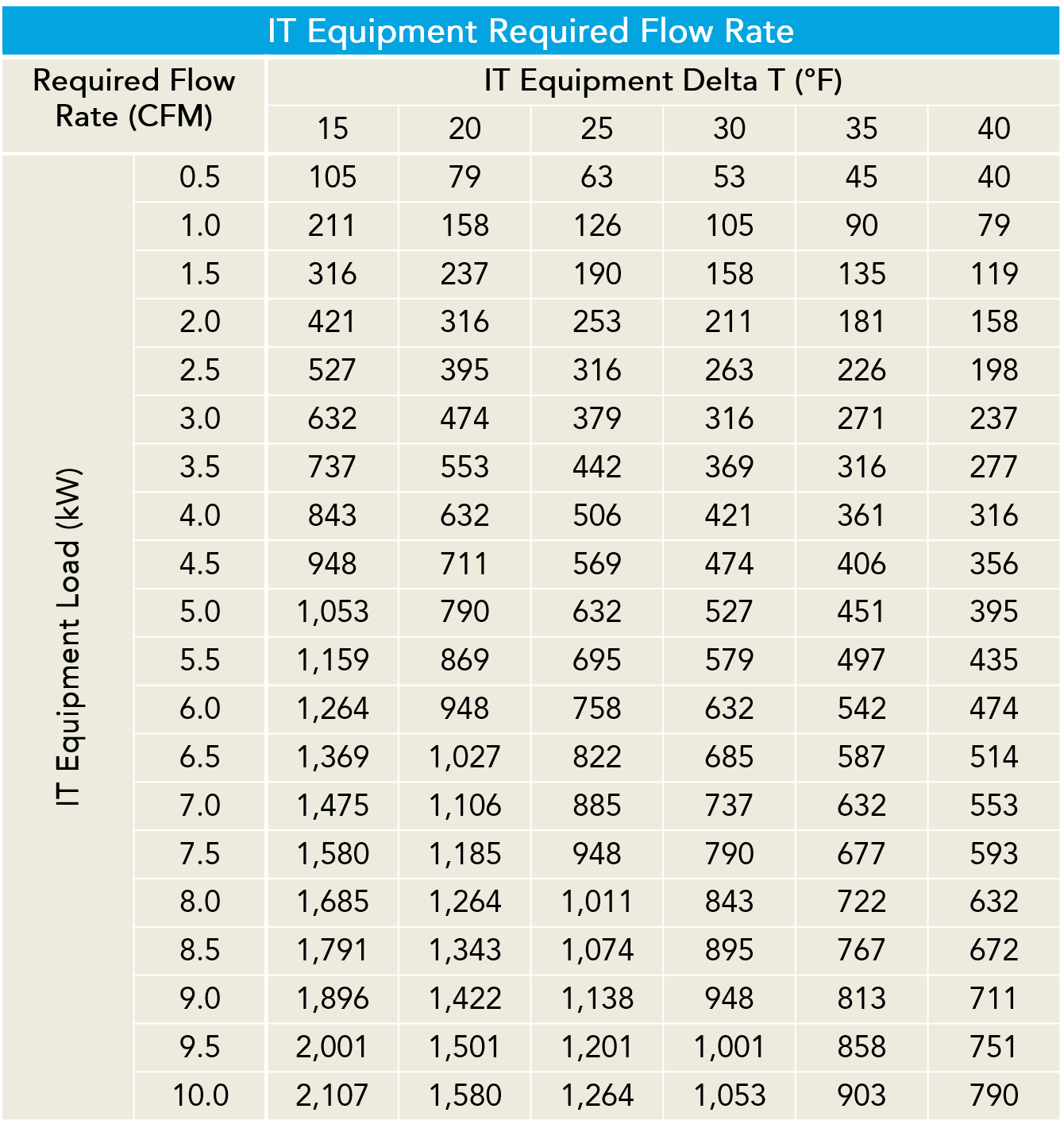IT Equipment Delta T and Flow Rate: How They Impact Your Data Center15 min read

As we recently discussed, reducing bypass airflow is key to increasing cooling capacity and reducing operating costs. Airflow management improvements allow for the reduction of conditioned airflow rates from cooling units, either by reducing fan speeds or by turning units off. This reduces the amount of bypass airflow in the room by making the delivered flow rate of conditioned air closer to the flow rate required by IT equipment. An understanding of IT equipment flow rates will help you to further refine the cooling efficiency and capacity and help you make informed decisions about procuring IT equipment in the future.
Specifying computer equipment for a data center might on the surface appear to be one of the most basic of IT activities, but it can have a profound impact on the data center mechanical plant and the overall cost of operating the data center. For example specifying traditional discrete servers or blade servers is just one of those decisions. While the IT decision process might typically focus on which type of server might best support virtualization or application segregation or which might offer an easier path to technology refreshes for higher transaction speeds or perhaps weighing the importance of I/O expansion scalability versus raw computing power, the effect on the total architecture of the data center should also be part of that decision process.
Historically, blade servers have produced higher ΔT’s than traditional rack-mount servers, popularly referred to as “pizza box” servers. That is to say, the cool supply air entering a blade chassis would exit as hotter air than would the supply air entering a pizza box server. This difference is described by the basic equation of heat transfer:
q = Cp x W x ΔT
where q = amount of heat transferred
Cp = specific heat of air
ΔT = temperature rise of air across the heat source
W = mass flow
When we normalize the terms for the environment and units of measure we are familiar with in North America, this relationship is described as:
CFM = 3.16 X watts
ΔT
where CFM = cubic feet per minute of airflow through the server
3.16 = factor for density of air at sea level in relation to ⁰F
ΔT = temperature rise of air passing through the server in ⁰F
For reference, the following table shows the relationship between electrical load, ΔT, and cooling airflow rate of IT equipment:

Based on this relationship, a blade server chassis with sixteen (16) servers drawing a total of 5kW with a 35⁰F ΔT would draw 451.4 CFM
451.4 CFM = 3.16 X 5000
35⁰F
whereas ten 500 watt pizza box servers, also drawing a total of 5kW, with a 20⁰F ΔT would draw 790 CFM.
790 CFM = 3.16 X 5000
20⁰F
So even though the two IT solutions draw the same power there effect on the mechanical systems is very different, especially if applied across an entire data center.
Identifying the ΔT and associated IT equipment flow rates is crucial to balancing the volume of air moving through the IT equipment with the volume of air moving through the cooling units. This level of cooling capacity optimization is the ultimate method of reducing bypass airflow, and to maximizing the cooling capacity of the room, reducing the operating cost, and deferring capital expenditure.
Real-time monitoring, data-driven optimization.
Immersive software, innovative sensors and expert thermal services to monitor,
manage, and maximize the power and cooling infrastructure for critical
data center environments.
Real-time monitoring, data-driven optimization.
Immersive software, innovative sensors and expert thermal services to monitor, manage, and maximize the power and cooling infrastructure for critical data center environments.

Nice table, need one in Celcius. 🙂
This table/article also shows the importance of containment (if poor, bypass etc will result in a lower delta-t, which means you’ll need more more air for cooling = $$).